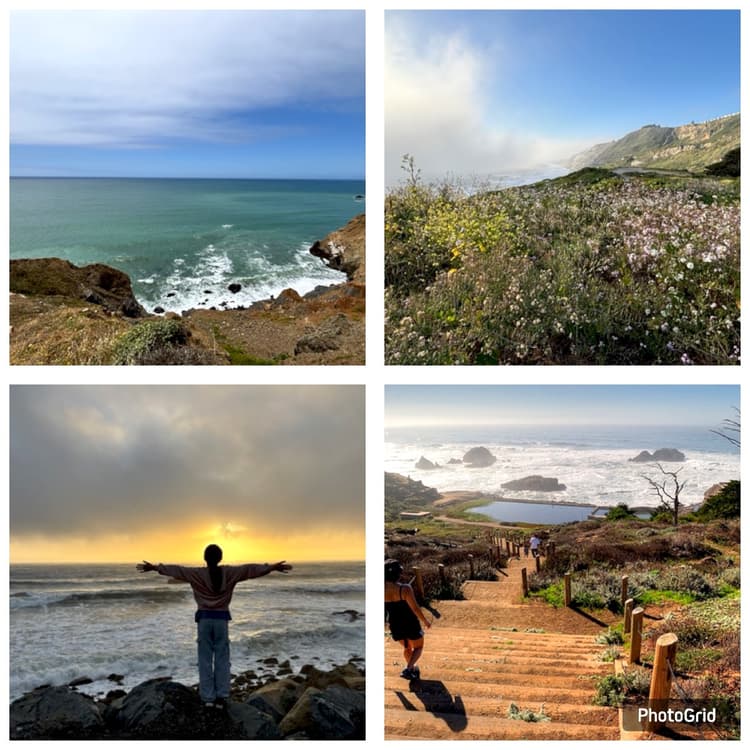Our Trip to Rio de Janeiro (Key Highlights & Itinerary)
Posted by Grace on December 11, 2024
During thanksgiving break of 2024, we snatched very good airfare deals and took a trip to Rio de Janeiro. This is a summary of the trip with key highlights and itinerary.
Before we start, I want to say that Rio de Janeiro is a beautiful city with friendly people, cheap but great food, exotic animals, and a rich culture. We love it!
Contents
Key Highlights
Christ the Redeemer
Christ the Redeemer is a must-see in Rio de Janeiro. No matter how crowded it is, it is worth the visit, because it is one of the World's New 7 Wonders.
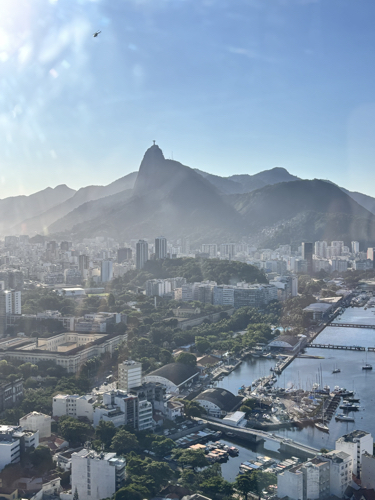 You can see the Christ the Redeemer from many places in Rio de Janeiro
You can see the Christ the Redeemer from many places in Rio de Janeiro
Sugarloaf Mountain
Sugarloaf Mountain is a must-see in Rio de Janeiro. It is a cable car ride up to the top of the mountain, and the view is breathtaking. It is symbol of Rio de Janeiro, besides the Christ the Redeemer.
Tijuca Rainforest
I was so sick that I missed this tour. But my husband took our kids to the Tijuca Rainforest. It is a 5.5 hour tour with open top car, hike for half an hour, see wildlife and waterfalls. They got to see a sloth, monkeys, water snakes and a lot of birds. Their tour guide said that they can only see 10 sloths in a year. So my kids said they were so lucky!
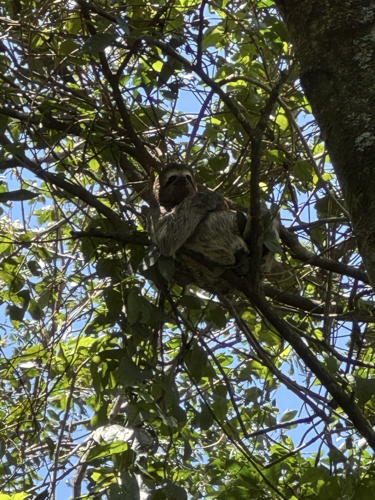 Sloth at Tijuca Rainforest
Sloth at Tijuca Rainforest
One thing to note is watch out for mosquitoes. They are everywhere! My husband and kids got bitten by mosquitoes, and did not notice until they were back from the tour. Their legs were swollen and itchy for several days! Ouch!
Lagoa Rodrigo de Freitas
When you arrive in Rio de Janeiro, Lagoa Rodrigo de Freitas is the first lake you will see. It is a beautiful lake with a nice view of the city. You can see many people jogging around the lake.
But the best part of the lake to me is that you can see capybaras in the lake, if you are lucky. Silly me, I did not know that capybaras were native to Brazil until my son pointed at one capybara by the lake near us. I was psyched! I always loved capybaras, but this was the first time I saw one in real life. Very special!
 Capybara
Capybara
Samba City
Samba city offers a guided tour of the samba city, and the guide will take you to the backstage of the samba city. You will see the samba workers building the new costumes and cars, and the guide will explain the history of the samba city. They also taught us to dance samba with their costumes and drink caipirinha. Hahaha!
I heard that samba has very serious competition every year. To get in the league, samba dancers have to practice very hard. It is abolutely a top honor to be in the samba league and earn the right to have a warehouse inside the samba city.
I consider this is one the best way to understand the culture of samba, the culture of Rio de Janeiro.
Favela Tour
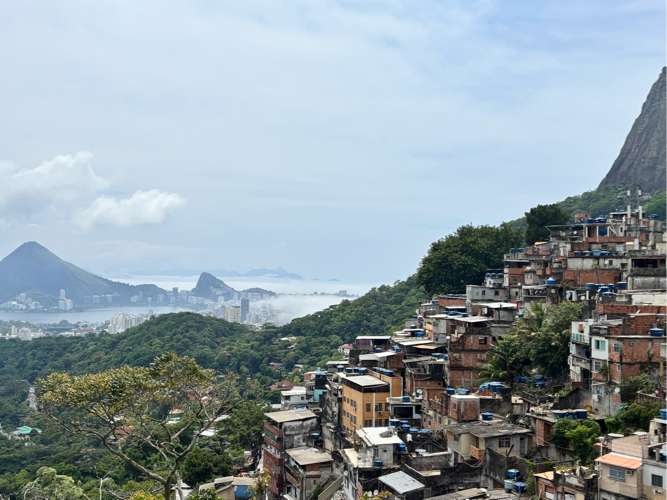 Favela
Favela
On the last day, we visited Brazil's largest favela: Rocinha. There are thousands of favelas in Brazil, where there are no police, only drug gangs controlling the social order.
The houses and streets are in disrepair, with garbage piled high. The hot Brazilian weather carries the sour smell of trash. The houses lack street numbers, making it impossible to receive mail or deliveries; everything relies on the locals' familiarity. Electricity is free here, as the chaotic wiring is ultimately stolen power.
Many cats live here, as they are useful for controlling the rat population.
In the few small schools available, there are hardly any teachers. Our guide mentioned that only teachers who have made mistakes in the city are sent here to teach.
Despite the absence of police, the crime rate is extremely low. If someone steals, bullies, or abuses a child, the gang will take them to the woods or to a church and execute them. We could still see bullet marks on the walls of those churches. In the city, police maintain order, but here, the criminals (gangs) are the ones who uphold the law. As we walked through the alleys, we passed by several gang members.
People born here either work hard hoping to leave or, less fortunate ones, join the gang at 16 and are bound for life. Those who work hard go to the city for jobs during the day and return here at night because the rent is cheap, about $100 a month. The favela residents and city dwellers live in two separate worlds, with no interaction, even in marriage.
There are no homeless people here. If there are, they are either taken away by family or kicked out of the favela to wander the city streets.
Our 26-year-old guide was born and raised here. When I asked him what his dream was, he said it was to leave this place, to go to an English-speaking country. His words touched me deeply. He described Brazil as a sinking ship, hopeless. When I asked how he planned to leave, he said it would be through hard work, working tirelessly.
Many famous football stars come from the favelas, the most notable being Rivaldo. These stars are idols for the children here and a motivation to escape. Once they leave, they rarely return; leaving is a mark of honor.
A local guide completely changed my perception of this place. It is not the chaotic and degenerate environment I had imagined. People are living resiliently; it’s just a different environment. This made me realize that human development in modern society does not have to follow a single model.
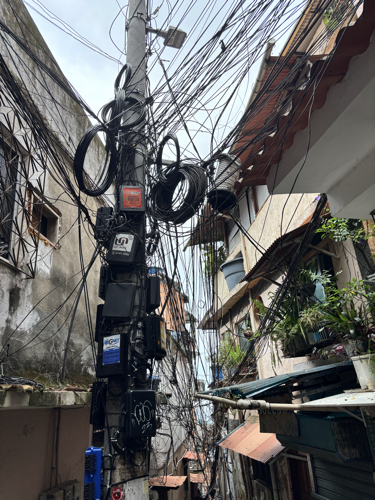 Cables inside the favela
Cables inside the favela
I rarely talk to my children about my childhood environment. These scenes and smells are not unfamiliar to me. This seemingly dirty environment shapes character and is, in fact, the most valuable wealth, creating infinite motivation.
Copacabana Beach
Copacabana Beach is a relaxing place to enjoy the beach. My kids enjoyed the beach and the sand, while I enjoyed the fresh coconut water.
 Copacabana Beach
Copacabana Beach
On the beach, there were many vendors selling fresh coconut water, seafood, snacks, hats, and more. They walk around the beach, and you can buy from them.
Food
Acai Bowl
I had a coworker from Brazil who introduced me to Acai Bowl. He said, Acai Bowl in Brazil is the best, and it tastes different from the one in the US.
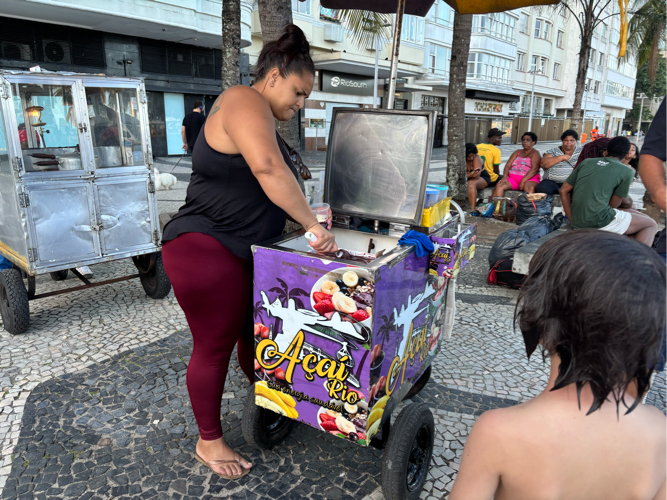 Acai Bowl
Acai Bowl
When we arrived at the Copacabana Beach, we saw a lot of Acai Bowl stands. I could not resist and bought one. It was delicious! It tasted a like a fruit sorbet with many different toppings. It tasted wonderful!
You can find Acai Bowl all over the city, literally every corner.
All You Can Eat but by the Pound
You can find All You Can Eat but by the Pound all over the city. It is a buffet style restaurant where you pay by the pound of food you eat. The food is delicious and cheap.
Why don't we have this in the US? Great selection of food and you don't have to wrestle with your tempetation to eat more.
Other Wonderful Experiences
Nail Salon
Nail salons are everywhere in Rio de Janeiro. We found a nail salon that is very cheap and good! My daughter and I got our manicure and pedicure for $4 each. Manicure is $4, pedicure is $4. Totally $16 (R100) for both of us. Can you believe it?
Cooking Class
We found an Airbnb experience for cooking class. The host is a local chef who will take us to the local supermarket and teach you how to cook traditional Brazilian dishes. We had a great time learning how to cook and eating the food we made. We made 9 dishes in total!
There’s something special about a local person; he mentioned many foods we usually overlook, such as avocados produced here, the cashew juice that children drink, and the variety of bananas grown here.
 Cashew fruit
Cashew fruit
The chef also taught us many simple yet delicious recipes, for example, you can mix any jam with chili sauce to create a tasty dip! Cutting okra in half and frying it makes for a delicious dish.
Brazil is a food country!
Important Tips
- People here mostly don't speak English. But with gestures and Google Translate, you can understand the general meaning.
- Mosquitoes are everywhere in summer. So prepare mosquito repellent, after bites, and long pants.
Itinerary
Ground Rules
Since we are on vacation, we want to enjoy the city and not be too exhausted.
- Limit time out and about to 7 hours or less per day
- Limit the amount of walking between destinations - prefer transit
- Limit total walking time (besides getting to and from the metro) to 40 minutes per day
- If there is a walking tour, don’t add another destination that day
Day 1: Arrival in Rio de Janeiro
Checked into the Airbnb.
Day 2: Beach day!
Morning chilling at Copacabana Beach. Watch sunset at Pedra do Arpoador.
Day 3: Fully guided tour of the city
Christ the Redeemer, Sugarloaf Mountain, Maracana Stadium, Metropolitan Cathedral, Sambadrome, and more.
Cost: $321 for a family of 4.
Day 4: Backstage Tour of Samba City
Cost: $50 / person
Day 5: Tijuca Rainforest
5.5 hour tour with open top car, hike for half an hour, see wildlife and waterfalls.
Cost: $216 for a family of 4.
Day 6: Free day
Beach morning at Copacabana beach. Walk down to Beco do Rato from Parkue das Ruinas.
Day 7: Local Cuisine
Guided tour in local supermarket, cooking class.
Cost: $370 for a family of 4.
Day 8: Visiting Rocinha Favela & Departure
Later, we also strolled around Lagoa Rodrigo de Freitas.

